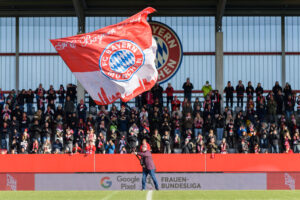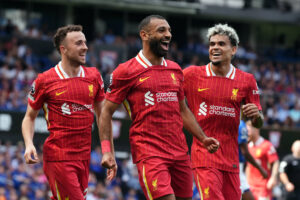Mikel Arteta is learning fast that, as a football manager, no sooner do you solve one problem than another one emerges. Thus, just as he is beginning to inject some much-needed strength and stability into an Arsenal defence that has been lacking those key defensive qualities for more than a decade, so doubts are emerging about the potency of his attack, and in particular the long-term future at the club of Pierre-Emerick Aubameyang, who Barcelona are now semi-officially sniffing around. However, arguably the biggest problem that Arteta the Arsenal manager faces is finding an Arteta-type player to start passing the ball in midfield, another fundamental footballing quality that Arsenal seem to have mislaid over the last few years.
Mikel Arteta Needs a Player Like the One He Was
Arteta Was a Cultured Midfielder Himself
As a player, Mikel Arteta was the kind of composed, cultured, comfortable-on-the-ball midfielder that the current Arsenal side so desperately lacks. Arteta himself acknowledged recently that, as a Spanish central midfielder, he was unfortunate to play at the same time as perhaps the finest midfield axis in football history, namely ‘Xaviesta’, the compound word coined in Spain to combine Xavi’s complete domination of the ball and Iniesta’s incomparable ability to create and score goals. Even without ‘Xaviesta’, the great Spanish national side of 2008-2012, which won three successive major international tournaments (one World Cup and two European Championships), had enough in reserve, in the form of Sergio Busquets, Xabi Alonso and David Silva, to ensure that Arteta’s route to the national side was permanently blocked.
Nevertheless, Arteta was a sufficiently skilful and combative central midfielder to make him Arsene Wenger’s first choice to replace Cesc Fabregas (another member, of course, of that fabulous Spanish international midfield) when the Catalan finally returned home in 2011. In truth, however, just as Arteta was never quite of the same class as his more famous midfield compatriots, so he was not quite as gifted as the two midfield titans who had bestrode Arsene Wenger’s best teams between 1997 and 2011, namely Fabregas and the man he replaced in the Arsenal midfield, Patrick Vieira, another central midfielder of World Cup-winning class.
Arteta the Player at Arsenal
Injuries and the ageing process meant that Arteta never fully displayed his creative potential in his five years at Arsenal, although he was still good enough to captain the Gunners to victory in the 2014 FA Cup final against Hull City, lifting the club’s first trophy for nine long years. However, by the time Arsenal retained the FA Cup the following year, Arteta had been replaced in central midfield by another Spaniard, Santi Cazorla. Unlike Arteta, Cazorla did win many Spanish caps, but mainly as a winger and squad member. For Arsenal, however, when Arteta became an increasingly inconsistent presence in the first team, Cazorla filled the gap in midfield, culminating in his wonderful performance and goal against Aston Villa in a 4-0 victory in the 2015 final.
So, it might be fairer to say that what Mikel Arteta the Arsenal manager really needs is not so much a Mikel Arteta-type player as a Santi Cazorla-type player, because it was Cazorla, once he had dropped back into central midfield to replace Arteta, who came closest to being the kind of passing midfielder, one who can bring the ball out from the back and quickly get it forward to the attack, that Arsenal had been missing since Fabregas’s sale to Barcelona. Of course, unfortunately, Cazorla was not a long-term replacement for Fabregas, Vieira or even Arteta, because soon after that triumphant Wembley display in 2015 he began to succumb to the injuries that eventually ended his own Arsenal career, although the fact that he still continues to star for Villareal in La Liga, to the extent that he has also represented Spain again, must give many people at The Emirates cause to wonder what might have been.
Arsenal’s Current Midfielders Are Hardly Cultured
This brief history of Arsenal’s best central midfielders under Arsene Wenger, from Vieira and Fabregas to Arteta and Cazorla, only serves to emphasise the paucity of the passing ability of the current Arsenal midfield. Essentially, Arsenal’s three first-choice central midfielders – Lucas Torreira, Matteo Guendouzi and Granit Xhaka – are all defensive midfielders, whose primary ability (at least in theory, if not always in practice) is to win the ball back, rather than redistributing it from the defence to the attack.
At the start of the season, it had been hoped that Dani Ceballos might be able to follow in the footsteps of his illustrious countrymen at Arsenal. However, after a promising start, particularly against Burnley in Arsenal’s first home game of the season, Ceballos has virtually disappeared from the first-team squad and has barely been used by Arteta since he took over at The Emirates in December. Perhaps Arteta realises, as Unai Emery apparently did not, that there is little or no point using a player on loan who you do not have the right to buy. Without that crucial clause in his loan agreement, Ceballos has played (on the few occasions when he has been in the Arsenal first team) like a man who knows that, no matter what, he will be returning to his parent club, Real Madrid, in the summer.
It had also been hoped that Arsenal’s own academy might unearth a passing midfielder or two. However, Joe Willock has not really seized any of the chances he has been given to shine, a charge that can be made against all the academy graduates this season with the exception of Bukayo Saka, and Ainsley Maitland-Niles has been so badly affected by injuries that he has not yet been given the chance to play in his favoured central midfield role. In any case, the suspicion remains that Maitland-Niles, like most of Arsenal’s current central midfielders, is primarily a defensive/destructive player rather than an offensive/creative one.
It was clear from Arsenal’s relative lack of action in the January transfer window, with the exception of the loan signings of Pablo Mari and Cedric Soares, that the club are keeping whatever transfer powder they have left dry for the summer. Then, in addition to making several permanent defensive signings and possibly replacing Aubameyang as the club’s main striker (although in Gabriel Martinelli Arsenal may already have a replacement for the great Gabonese goal-scorer), Arteta must make it a priority to sign a skilful, creative, passing midfielder. If he cannot get a player of the quality of a Vieira or Fabregas, which is unlikely given Arsenal’s relative lack of strength in the transfer market, he must at least sign a Mikel Arteta-type player, or better still a Santi Cazorla-type player, to give his midfield the creativity that it so urgently requires.
Main Photo






